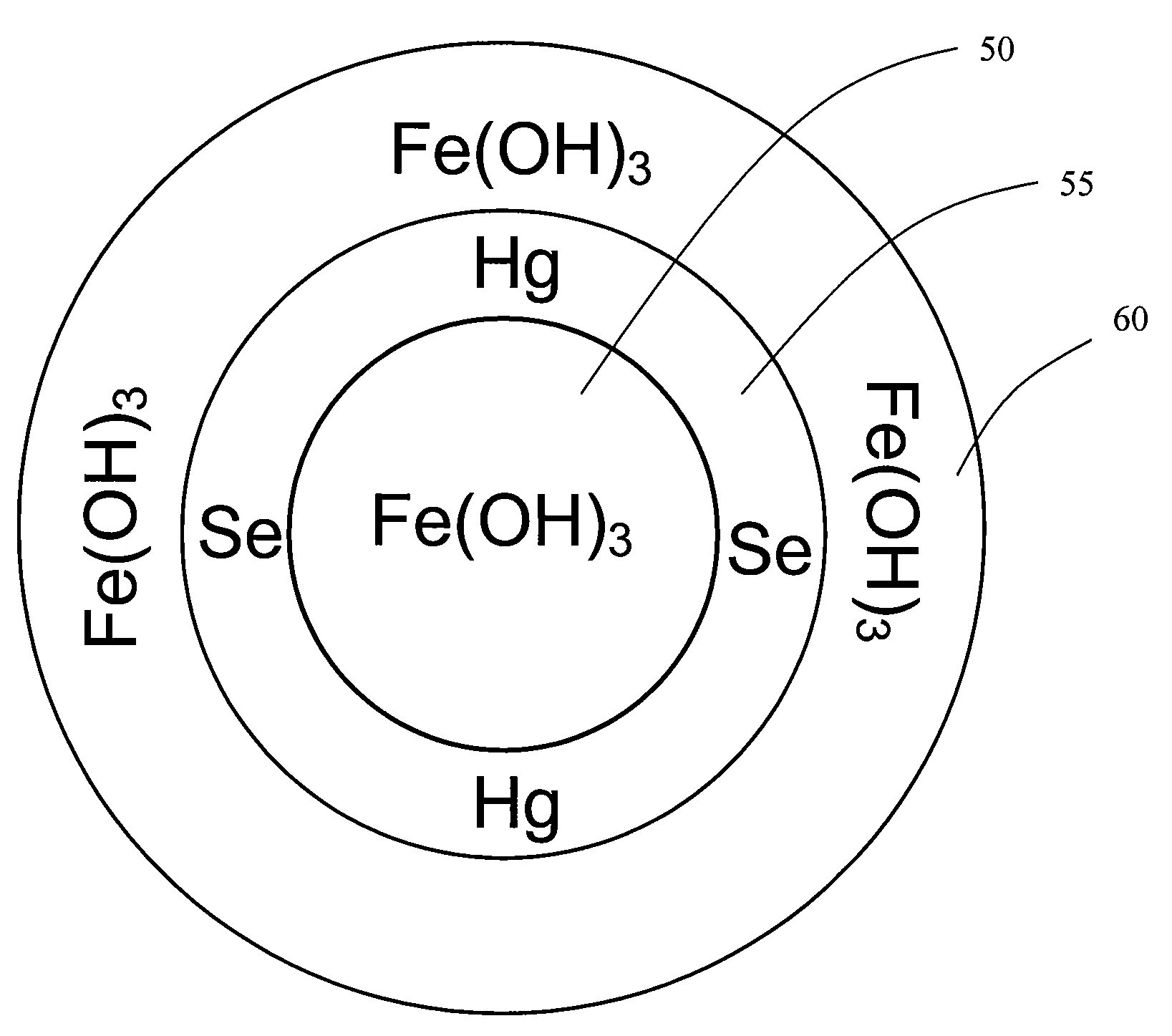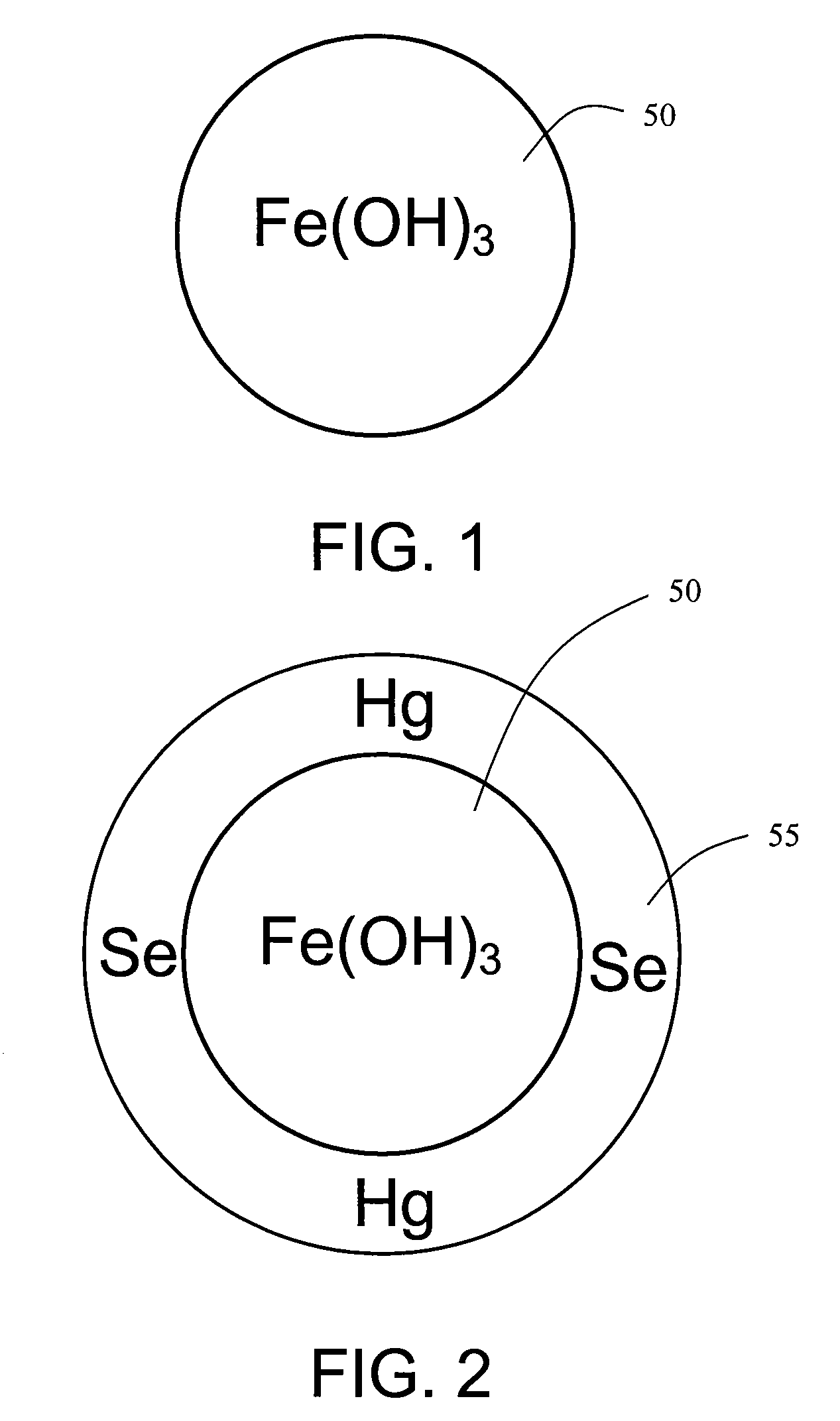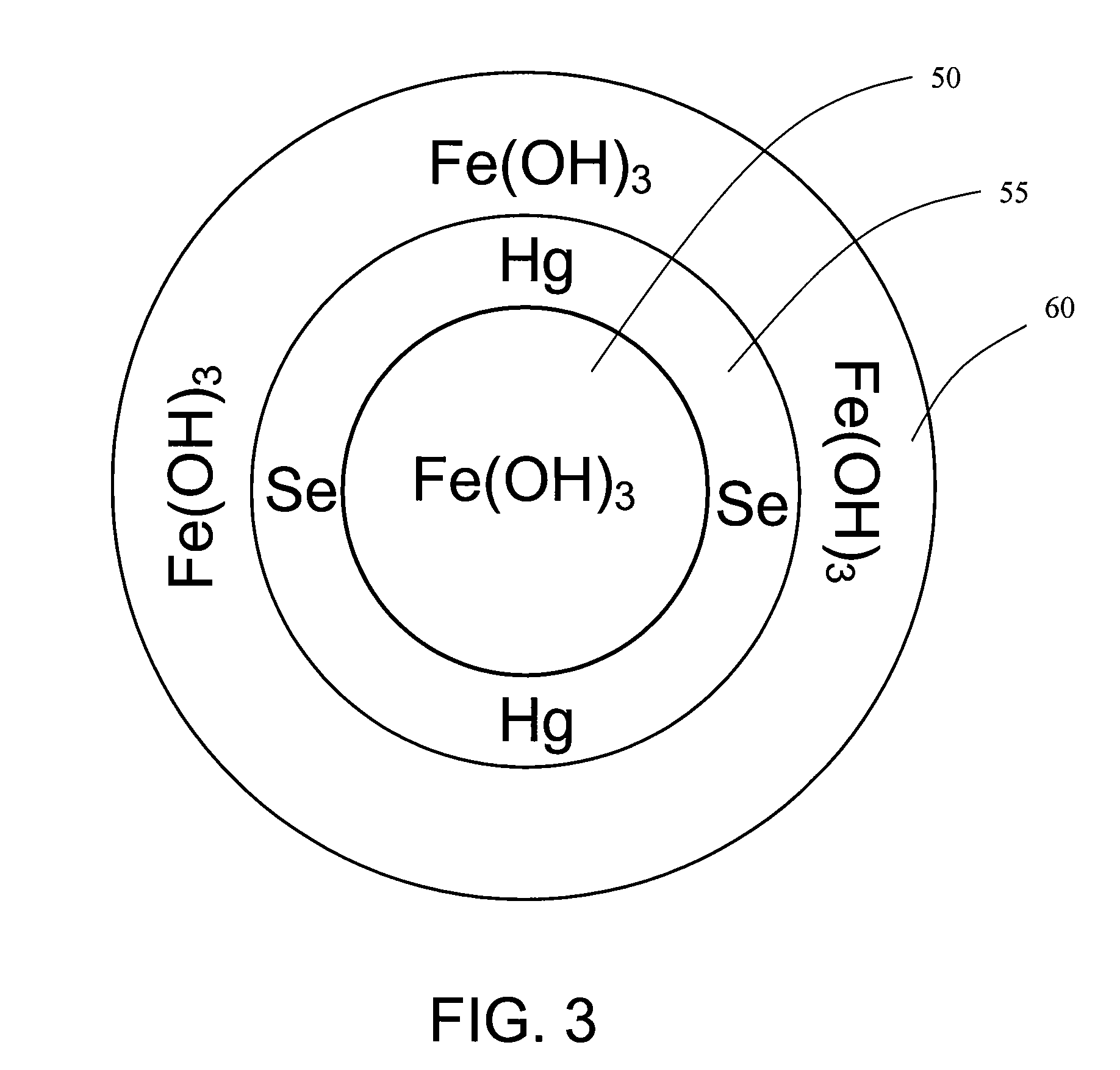Methods and systems for enhancing mercury, selenium and heavy metal removal from flue gas
a technology of mercury and selenium, which is applied in the direction of dispersed particle separation, separation processes, sulfur compounds, etc., can solve the problems of mercury above the limit being lost up the stack, fgd systems reaching a limit, and less effective fgd scrubbers
- Summary
- Abstract
- Description
- Claims
- Application Information
AI Technical Summary
Problems solved by technology
Method used
Image
Examples
Embodiment Construction
[0023]Described herein are methods and systems for adding various forms of iron to flue gas desulfurization (“FGD”) systems to enhance removal from the flue gas of mercury, selenium and / or one or more heavy metals, such as cadmium, arsenic, lead and nickel. Adding iron to a FGD system reduces re-emission of mercury, and thus increases the effective removal efficiency of mercury from the flue gas, as well as potentially producing a co-precipitate with iron hydroxide. For selenium, the reaction of selenite with iron in a FGD system may reduce the formation of selenate, and may result in the absorption or precipitation of reduced forms of selenium with iron hydroxide. Due to the recycle of solids between the sorption tower and oxidation reactor of a conventional forced oxidation FGD system, the iron hydroxide precipitation reaction can be manipulated to produce larger solid particles consisting of ferric hydroxide, mercury and selenium, thus enhancing the removal of these particles in ...
PUM
| Property | Measurement | Unit |
|---|---|---|
| Weight | aaaaa | aaaaa |
| Ratio | aaaaa | aaaaa |
Abstract
Description
Claims
Application Information
 Login to View More
Login to View More - R&D
- Intellectual Property
- Life Sciences
- Materials
- Tech Scout
- Unparalleled Data Quality
- Higher Quality Content
- 60% Fewer Hallucinations
Browse by: Latest US Patents, China's latest patents, Technical Efficacy Thesaurus, Application Domain, Technology Topic, Popular Technical Reports.
© 2025 PatSnap. All rights reserved.Legal|Privacy policy|Modern Slavery Act Transparency Statement|Sitemap|About US| Contact US: help@patsnap.com



